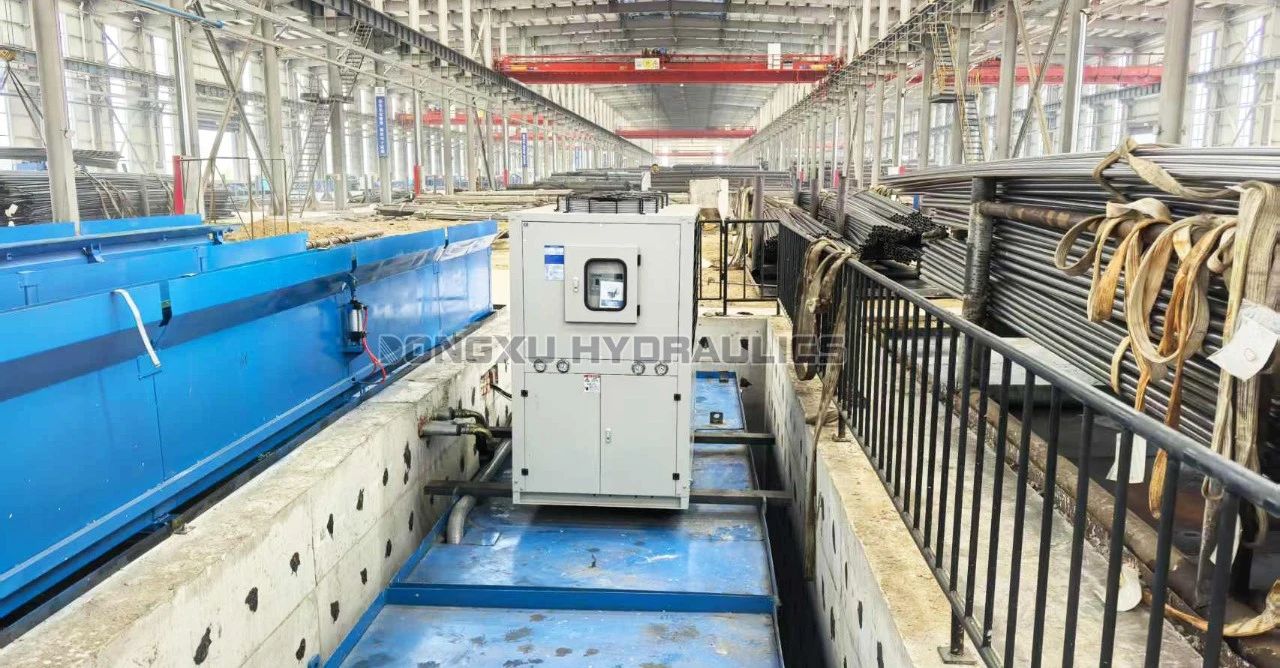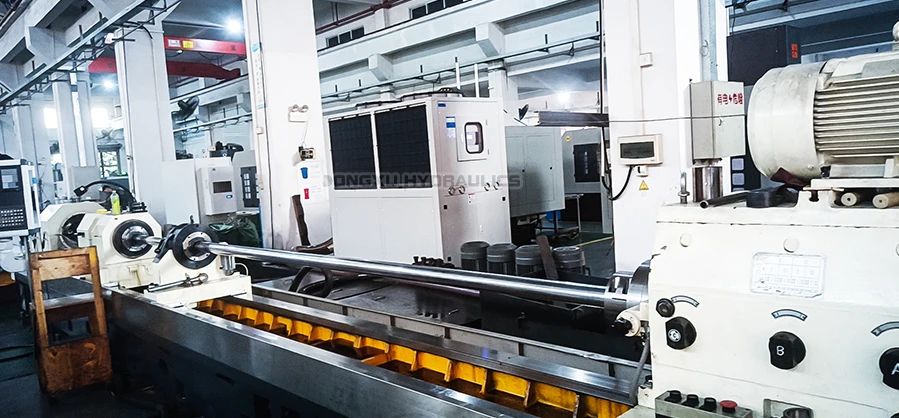Calculate the heat generated based on the temperature rise of the fuel tank.
Q = SH × De × V × DT/60
Q: Heat output (kW)
SH: Specific heat of oil is 1.97 kJ/kg·℃ (1.97 kilojoules per kilogram per degree Celsius)
De: Specific gravity of oil is 0.88 kg/L (0.88 kilograms per litre)
De: Specific heat of water is 4.2 × 10³ J/kg·℃
V: Oil/water capacity in litres (L), including the total water capacity in the tank and pipes
DT: Maximum temperature rise per minute
Note: ‘/60’ is used to convert temperature rise in degrees Celsius per minute to degrees Celsius per second; 1 kW = 1 kJ/s;
Note: When measuring, the tank temperature should be slightly lower than the ambient temperature; and the equipment should be operating at maximum load.
Example: For a tank volume of 3000 L, the maximum water temperature or oil temperature is 0.6°C per minute
Heat output Q = (1.97 × 0.88 × 3000 × 0.6) / 60 = 52 kW
Additional note: When selecting the cooling capacity of a cold oil machine, it is appropriate to increase the capacity by 20%–50%.

Main shaft heat generation power estimation:
P heat generation = P motor * λ
λ - Main shaft heat loss efficiency
For general mechanical main shafts, heat loss λ = 5-8% can be used for calculation. For high-speed main shafts, heat loss λ = 20-30% can be used for calculation.
Example: For a standard mechanical spindle on a machine tool with a motor power of 45 kW, the estimated heat generation is:
P heat generation = P motor × λ = 45 × 8% = 3.6 kW

 GearboxesAgriculture/Products8
GearboxesAgriculture/Products8 GearboxesAgriculture/Products8
GearboxesAgriculture/Products8 GearboxesAgriculture/Products8
GearboxesAgriculture/Products8 GearboxesAgriculture/Products8
GearboxesAgriculture/Products8 GearboxesAgriculture/Products8
GearboxesAgriculture/Products8 GearboxesAgriculture/Products8
GearboxesAgriculture/Products8 GearboxesAgriculture/Products8
GearboxesAgriculture/Products8 GearboxesAgriculture/Products8
GearboxesAgriculture/Products8 GearboxesAgriculture/Products8
GearboxesAgriculture/Products8 GearboxesAgriculture/Products8
GearboxesAgriculture/Products8 GearboxesAgriculture/Products8
GearboxesAgriculture/Products8 GearboxesAgriculture/Products8
GearboxesAgriculture/Products8 GearboxesAgriculture/Products8
GearboxesAgriculture/Products8 GearboxesAgriculture/Products8
GearboxesAgriculture/Products8 GearboxesAgriculture/Products8
GearboxesAgriculture/Products8 GearboxesAgriculture/Products8
GearboxesAgriculture/Products8 GearboxesAgriculture/Products8
GearboxesAgriculture/Products8 GearboxesAgriculture/Products8
GearboxesAgriculture/Products8 GearboxesAgriculture/Products8
GearboxesAgriculture/Products8 GearboxesAgriculture/Products8
GearboxesAgriculture/Products8

